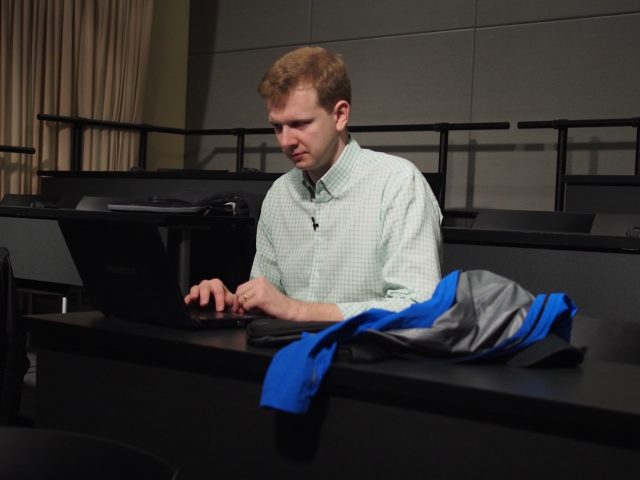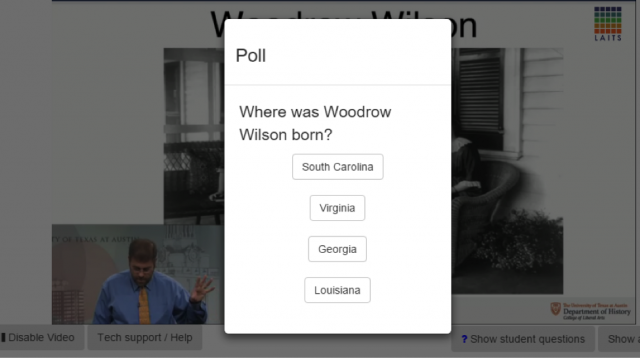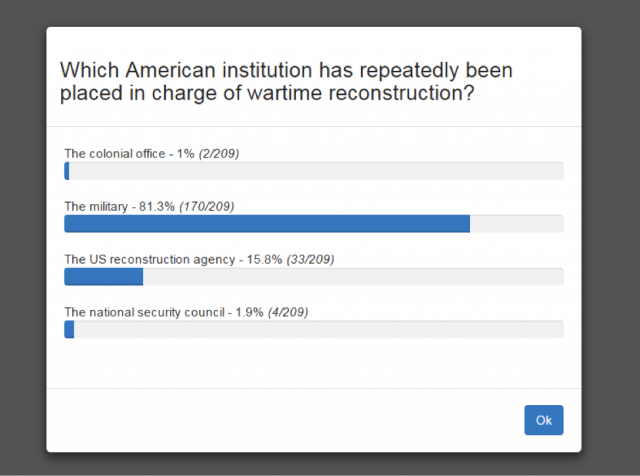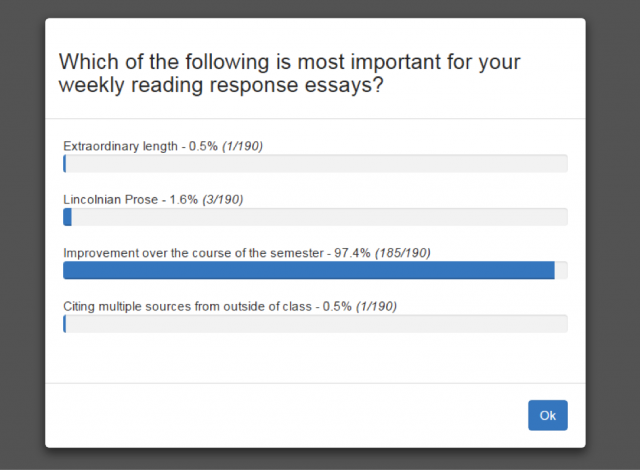Every year thousands of students take introductory courses in U.S. History at UT Austin. This spring Prof Jeremi Suri is experimenting with an online version of the U.S. History since 1865 survey course. He and his teaching assistants, Cali Slair, Carl Forsberg, Shery Chanis, and Emily Whalen will blog about the experience of digital teaching for readers of Not Even Past.
How do you know if students are actually watching a live-streaming online lecture? Excellent question!
Online courses offer a number of tools to counter the potential distractions that accompany online formats. Our class uses the “ping” to keep students accountable and engaged, supplementing the chat function that Emily described in last week’s blog post.
During each lecture, one of the teaching assistants sends three randomly spaced ping questions to every student in the real-time audience. Students see a multiple choice question pop onto their screen, and have two minutes to answer before it disappears.
If you are surfing the web or answering e-mails during lecture – beware! You might miss your ping and your chance to prove you were tuned-in to the lecture. Pings are intended to motivate students to stay engaged in lecture. You might think of them as a kinder, gentler, form of the cold-call!
They also offer several labor saving functions. Teaching Assistants can easily calculate attendance grades by pulling up a log of students’ ping answers, eliminating the need to keep and compile a separate attendance roster each week.
Pings serve a pedagogical function as well. Rather than testing students on whether they caught a passing reference to a date or name in the course of a lecture, a well-crafted ping question can reinforce Professor Suri’s conceptual points.
TAs get immediate feedback on how the class has answered the ping question, allowing them to see when a large number of students didn’t grasp an important point, and providing an opportunity to clarify. Pings can also be used to allay students’ confusion about logistics: for example, a poll question might ask students what time their weekly reading responses are due, after Professor Suri covers the point.
For the TAs, crafting multiple choice answers for our pings provides an enjoyable exercise in pedagogical creativity, as we aim for questions that are not too obscure, drive home key points, and maybe even add a little levity.
With the exception of the first image, all images are courtesy of the author.







